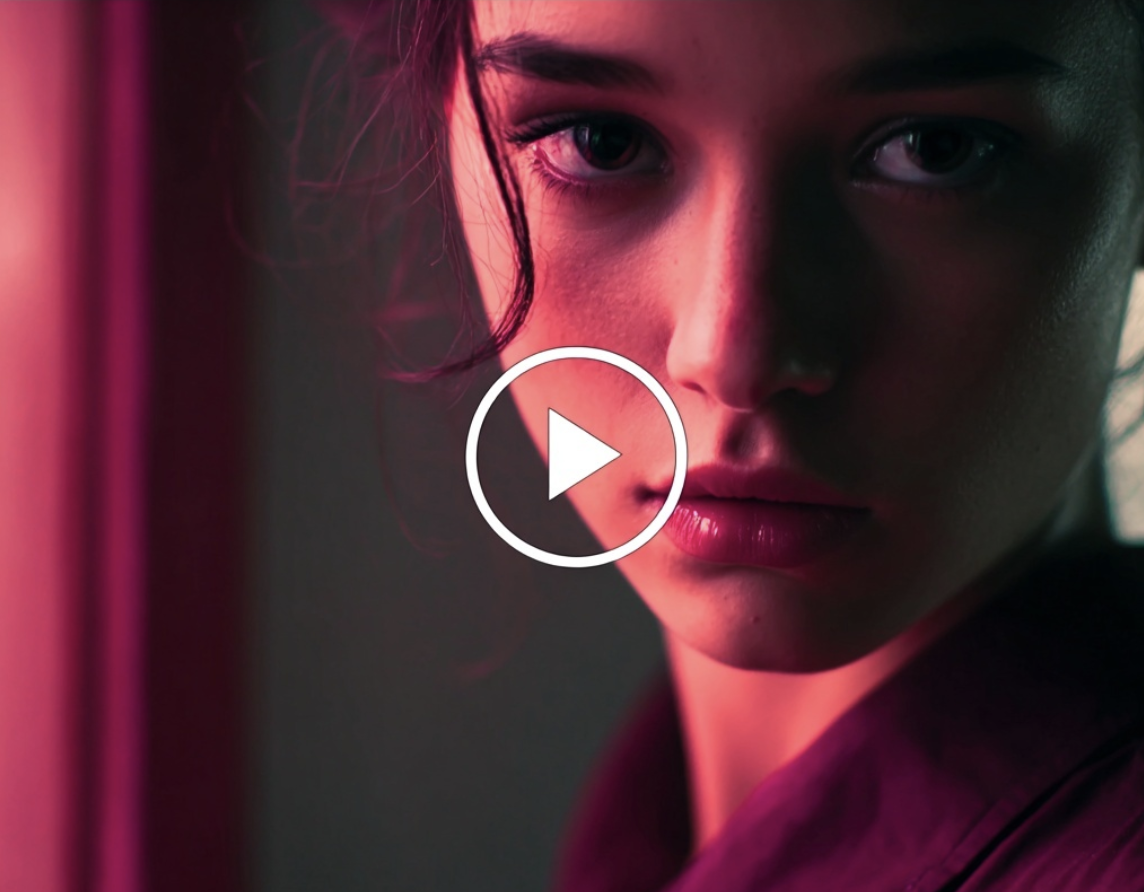In this guide, we’ll dive deep into what J-cuts and L-cuts are, why they’re so impactful in storytelling, how to create them, and the best tips for mastering these techniques. Whether you’re an aspiring video editor or an experienced professional, understanding these cuts will elevate your editing game.
What Are J-Cuts and L-Cuts?
J-Cut
A J-cut is a type of audio-visual editing technique where the audio from the upcoming clip starts playing before the current video ends. This means the sound introduces the next scene before the visual transition happens, creating a “J” shape in the timeline when looking at the audio and video tracks.
Example in Film:
Imagine a scene where two characters are talking in a café. Before the camera cuts to the next location—a bustling street—you hear the sound of traffic while still seeing the café scene. This subtle overlap builds anticipation and smooths the transition between the two settings.
L-Cut
An L-cut is the opposite of a J-cut. In an L-cut, the audio from the current clip continues playing even after the video transitions to the next clip. This creates an “L” shape in the timeline.
Example in Film:
A character might finish speaking, but their voice continues as the scene transitions to another setting, creating a sense of continuity.
Why Are J-Cuts and L-Cuts Important in Film Editing?
1. Maintain Narrative Flow
Both J-cuts and L-cuts allow editors to create seamless transitions that prevent abrupt cuts, keeping the story fluid and engaging.
2. Enhance Emotional Impact
By overlapping audio and video, you can guide the audience’s emotions and focus. For example, a J-cut might create anticipation, while an L-cut can evoke nostalgia or introspection.
3. Build Immersion
J-cuts and L-cuts draw the audience deeper into the narrative by creating a natural rhythm between audio and visuals, mimicking how people experience the real world.
These techniques are part of a broader set of professional storytelling tools. This complete guide to video editing fundamentals explains how pacing, rhythm, and audio continuity work together to make edits feel invisible and emotionally engaging.
How to Create J-Cuts and L-Cuts
Creating J-cuts and L-cuts requires understanding your video editing software’s timeline and tools. Here’s how to achieve these techniques in two popular platforms: Adobe Premiere Pro and DaVinci Resolve.
If you want to improve your overall timeline workflow in Premiere Pro, this detailed guide to professional Premiere Pro editing techniques covers audio handling, clip linking, fades, and timeline organization used by working editors.
Creating J-Cuts and L-Cuts in Adobe Premiere Pro
- Set Up Your Timeline
- Drag your video and audio clips into the timeline. Ensure the audio and video tracks are not linked, so you can edit them independently.
- Adjust the Audio of the Incoming Clip (J-Cut)
- Drag the start of the incoming audio beneath the outgoing video clip.
- Fine-tune the overlap by listening to how the audio transitions between the clips.
- Extend the Audio of the Current Clip (L-Cut)
- Extend the outgoing audio track so it plays beneath the incoming video clip.
- Adjust the duration based on the emotional tone or pacing of your edit.
- Refine with Keyframes
- Use audio fades and keyframes to smooth the transition and avoid jarring sound changes.
Creating J-Cuts and L-Cuts in DaVinci Resolve
- Organize Your Clips
- Place your video and audio files on the timeline. DaVinci Resolve automatically links audio and video, but you can unlink them by right-clicking and selecting "Link Clips."
- Use the Blade Tool
- Cut the audio or video track where the overlap should begin.
- Drag and Overlap Tracks
- For a J-cut, drag the audio from the incoming clip to overlap with the outgoing video.
- For an L-cut, extend the audio of the outgoing clip beneath the incoming video.
- Polish with Transitions
- Use audio fades or crossfades to make the transition smooth.
Best Practices for J-Cuts and L-Cuts
1. Plan the Cut During the Shoot
If you’re shooting your own footage, think about where J-cuts or L-cuts might enhance the narrative. Capture ambient sound or extra dialogue to give yourself flexibility in post-production.
2. Use J-Cuts to Build Anticipation
Introduce the sound of an upcoming scene to subtly prepare the audience for what’s next. This is particularly effective for transitioning between locations or time periods.
3. Use L-Cuts to Maintain Emotional Connections
Letting a character’s voice or a piece of background sound linger can evoke emotions and keep viewers engaged.
4. Match the Tone
Ensure that the audio and visual elements you’re overlapping complement each other. For instance, don’t introduce upbeat music over a somber scene unless it’s intentional.
5. Keep It Subtle
The beauty of J-cuts and L-cuts lies in their subtlety. If done too abruptly, they can feel jarring and distract from the narrative.
Creative Uses of J-Cuts and L-Cuts
1. Dialogue Transitions
In conversations, J-cuts and L-cuts can make dialogues flow naturally. For example, you can begin hearing a character’s response before cutting to their reaction shot.
2. Establishing Shots
Start the sound of the next scene before showing it. For instance, hearing birds chirping or waves crashing before cutting to an outdoor or beach scene.
3. Flashbacks or Dream Sequences
Use L-cuts to extend audio from a flashback or dream sequence into the present-day scene, blurring the lines between the two timelines.
4. Action Sequences
In fast-paced scenes, J-cuts can create a sense of urgency, while L-cuts can add emotional weight by letting sounds linger.
Common Mistakes to Avoid
1. Overusing the Technique
While J-cuts and L-cuts are effective, overusing them can make your edits predictable. Use them strategically to enhance storytelling.
2. Ignoring Audio Quality
Ensure the audio in both clips matches in volume and clarity. Poorly edited transitions can break immersion.
3. Misaligned Pacing
Adjust the overlap to suit the pacing of your story. A rushed transition can feel abrupt, while a slow one might drag the narrative.
Learn J-Cuts and L-Cuts with Miracamp
J-cuts and L-cuts are indispensable tools for any video editor looking to enhance storytelling and create seamless transitions. By understanding when and how to use them effectively, you can elevate your editing skills and deliver more engaging content.
At Miracamp, we teach aspiring editors how to master advanced techniques like J-cuts and L-cuts, along with industry-standard tools like Adobe Premiere Pro and DaVinci Resolve. Our hands-on training ensures you’re ready to tackle real-world projects with confidence.
Ready to master video editing? Join Miracamp’s Video Editing Course and take your storytelling to the next level.
FAQ J-Cuts and L-Cuts
What are J-Cuts in video editing?
A J-Cut is an editing technique where the audio from the next scene starts before the current video ends. This creates a smooth transition and builds anticipation by introducing the next scene through sound.
What are L-Cuts in video editing?
An L-Cut is the opposite of a J-Cut. Here, the audio from the current scene continues to play even after the video transitions to the next scene. This technique helps maintain continuity and emotional connection.
Why are J-Cuts and L-Cuts important in video editing?
These techniques are essential for creating seamless transitions, enhancing storytelling, and building emotional engagement. They mimic how we experience sound and visuals in real life, making scenes feel more natural and immersive.
Can beginners learn J-Cuts and L-Cuts?
Yes, both J-Cuts and L-Cuts are beginner-friendly editing techniques. Most video editing software, such as Adobe Premiere Pro and DaVinci Resolve, make it easy to create these transitions with practice.
How do I create a J-Cut in Premiere Pro?
To create a J-Cut in Premiere Pro:
- Place your video and audio tracks on the timeline.
- Unlink the audio and video.
- Drag the incoming audio beneath the current video clip.
- Fine-tune the overlap for a smooth transition.
How do I create an L-Cut in DaVinci Resolve?
To create an L-Cut in DaVinci Resolve:
- Import your clips into the timeline.
- Unlink the audio and video.
- Extend the outgoing audio track beneath the next video clip.
- Use audio fades for a polished transition.
Where are J-Cuts and L-Cuts commonly used?
These techniques are widely used in:
- Dialogue transitions to make conversations flow naturally.
- Establishing shots to introduce a new scene.
- Montages or flashbacks for emotional impact.
- Action sequences to build urgency or suspense.
Are J-Cuts and L-Cuts suitable for all types of videos?
Yes, they can be applied to various types of content, including films, documentaries, social media videos, corporate videos, and vlogs, to enhance storytelling and flow.
What mistakes should I avoid when using J-Cuts and L-Cuts?
- Overusing them: Too many J-Cuts or L-Cuts can become predictable.
- Ignoring audio quality: Ensure audio levels match between scenes.
- Misaligned pacing: Adjust the timing to suit the mood and pacing of your video.
How can I master J-Cuts and L-Cuts?
Practice is key. Work on diverse projects and experiment with these techniques. For structured learning, consider enrolling in a video editing bootcamp like Miracamp, where you can learn advanced editing skills hands-on.
Can J-Cuts and L-Cuts be used in other types of editing?
Yes, these techniques are versatile and can be applied to any type of video editing, from short-form content to full-length feature films, to enhance transitions and storytelling.
Do I need expensive software to learn J-Cuts and L-Cuts?
No. While tools like Premiere Pro and DaVinci Resolve are industry standards, many free software options like Shotcut and HitFilm Express also support these techniques.
How can I make J-Cuts and L-Cuts smoother?
Use audio fades and crossfades to blend the audio tracks seamlessly. Pay attention to the rhythm and emotional tone of your video to make transitions feel natural.
Can J-Cuts and L-Cuts improve audience engagement?
Absolutely. These techniques keep viewers engaged by creating smooth transitions, building anticipation, and maintaining emotional connections between scenes.






